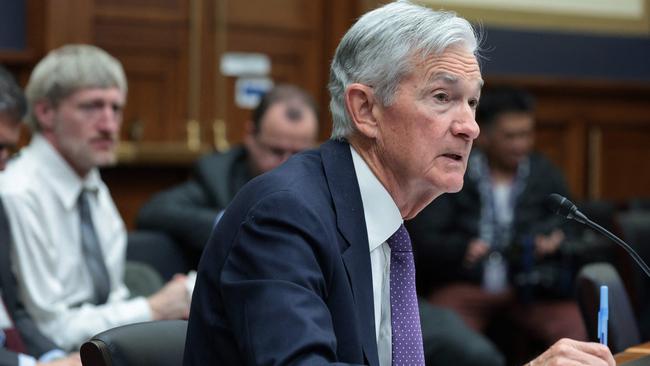US inflation shock could signal bull run’s end
Just a few weeks ago many avid market watchers expected the bull run to continue well into 2025 but now they’re not so certain. What’s changed?

Our conversation eventually turned to the outlook for economies and markets and I offered him a nuanced view of 2025 that contrasted with the one I held only a few weeks ago.
As we chatted I realised the confluence of positive influences on markets in 2023 and 2024: waning inflation, robust economic growth, and a significant infusion of liquidity into financial systems could not be relied upon this year.
These three primary factors spurred excitement around new technologies – especially artificial intelligence – and investors poured that infused liquidity into high-growth sectors, propelling equity indices to fresh all-time highs throughout 2024. Until this week those three influences offered the promise of a sustained bull run well into 2025.
Today, I am less certain.
The optimistic narrative that disinflation would continue has recently encountered a challenging hurdle.
The most recent US inflation data indicates that consumer prices have not only remained elevated but have begun to re-accelerate. US consumer prices rose at an annualised rate of 4.5 per cent over the last quarter – representing the fastest pace since late 2022 and reigniting concerns about the Federal Reserve’s future interest rate policy.
Meanwhile, stock market price-to-earnings (PE) ratios aren’t as inviting as they were a year ago, or two years’ ago. Those PEs are driven by liquidity (note that PEs went up even as interest rates increased), and today they are higher than in 2023 and 2024, but to expand further, more liquidity is required from central banks.

Before I continue, it’s worth keeping in mind January has, over recent years, had a funny habit of producing re-accelerating US inflation before decelerating for the remainder of the year; some of the uptick to seasonal adjustments might not fully account for year-end price hikes. If inflation turns lower again next quarter in the US you can disregard most of what comes next because the narrative I described in my last column will be far more relevant.
For many, however, the week’s upswing in inflation cast doubt on one of the core assumptions driving higher markets: the prospect of imminent monetary policy easing.
Throughout the year, investors had banked on the Federal Reserve’s capacity to guide rates lower, thereby extending the bull market and justifying lofty valuations in some sectors. With inflation creeping back up, that assumption may no longer hold true.
Fed officials have long cautioned the path to price stability would be “bumpy,” and indeed, the past six months have felt more like an uphill climb than a steady plateau.
Core inflation, which excludes often-volatile food and energy prices, has also ticked higher, now growing at an annualised rate of 3.8 per cent.
Groceries saw their steepest price increase in nearly three years, used car prices rose 2.2 per cent, prescription drug costs surged 2.5 per cent, and ongoing tariff policies introduced by the previous administration are adding inflationary pressures on imports – all signs that price pressures remain widespread and persistent.
And the bond market has already responded with bond yields spiking and futures traders are now putting a significantly higher probability on a Fed that refrains from cutting rates at all this year. Only a week ago, the odds of no rate cuts were just 10 per cent; now, they hover near 30 per cent.
The question now is whether the current resurgence in prices will prove to be another short-lived blip or the start of a more sustained trend that forces monetary policymakers to keep interest rates elevated for longer.
The implications for equity markets, already trading at valuations significantly higher than they were just two years ago, are profound.
A classic recipe for a bull market typically hinges on at least one of three conditions – rising corporate earnings (often implied by positive economic growth), multiple expansion (spurred by lower interest rates and disinflation), or abundant liquidity.

The market enjoyed all three to varying degrees in 2024, as economic data remained robust, inflation moderated briefly, and the US Treasury’s use of certain financing facilities, including its reverse repurchase agreement account, injected additional liquidity into the system.
However, valuations in certain segments – particularly high-growth technology – are now undeniably rich.
Many investors who have ridden the wave of high-multiple stocks have done so under the assumption that falling interest rates would provide a cushion for these lofty valuations.
If the Federal Reserve holds rates steady or, worse yet, signals a more hawkish stance to combat persistent inflation, that cushion could disappear.
Equity risk premiums may well need to widen, which would reduce the attractiveness of some of the market’s most popular growth darlings.
This potential shift in market sentiment underscores the need for fresh liquidity (yes central bankers and Trump are influenced by market conditions), but policymakers are likely to tread carefully in the face of accelerating inflation.
Flooding the market with more liquidity might soothe investors’ nerves in the short term, but it also risks exacerbating inflation.
Thus, central banks face a balancing act between mitigating market volatility and maintaining price stability. Until there is clear evidence that inflation has resumed a downward trend, robust policy easing – whether through rate cuts or significant new liquidity programs – remains uncertain.
Investors heavily weighted in high-flying and now capital-intensive AI growth stocks could face the brunt of any shift in interest rate policy.
Defensive sectors and smaller companies with demonstrated pricing power may become more attractive if the rate-cut timeline is pushed further out.
Alternative assets, such as private credit, could also offer a more stable yield profile, especially in a scenario where rates remain higher for longer.
Nonetheless, the door has not completely closed on the possibility of a renewed bull run. Should inflation data in the coming months show that the latest spike was merely another transient glitch – a repeat of what happened in early 2024 – markets could quickly pivot back to a more optimistic stance.
Roger Montgomery is founder and chief investment officer at Montgomery Investment Management.




This week I had lunch with a friend and one of Australia’s luxury retailing icons. What he doesn’t know about luxury brands in Australia is probably not worth knowing.